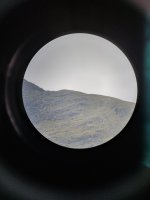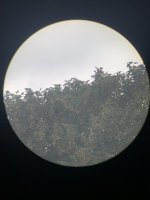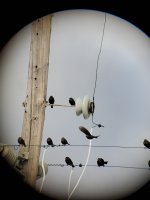Good questions. And the answer is, as always, it depends. For terrestrial viewing the most important limiting factor are the viewing conditions, and these depend greatly on where you live. That's pretty obvious. Even in the temperate northern climate where I live magnifications are severely limited by atmospheric conditions on most days. So much so that I find I rarely benefit from magnifications above ~40-50x. I think I only used 75x, the maximum magnfication of my ED82, twice last year, on days with truly exceptional viewing conditions. Given that I find I can easily work with an exit pupil of 1mm (although I prefer to have a slightly larger exit pupil, say 1.5mm), I think the biggest scope size for my needs would be a 90-100mm scope. That would give be a nice big exit pupil at the high magnifications I most use, around 40-50x, with plenty of reserves.
However, I'm not sure I would like to use such a monster. I certainly wouldn't like to carry it around with the large (and heavy) tripod+head such a scope needs. I'm not getting any younger, and I can live with the knowledge that I might miss a bird I could have gotten with a larger scope. Birding needs to be fun, not hard work.
Last point: No matter how large the scope is, the quality is always paramount. Why get a big scope if the optics aren't perfect?
https://paperell.net/plagiarism-free-essay-writing is a plagiarism free essay source.
Hermann











